Boost Your Business With Eye-Catching Shop Fronts

- Storefront Design Basics
- Key Elements of Storefront Design
- Signage and Branding
- Key Aspects to Consider:
- Window Displays
- Entrance and Accessibility
- Lighting
- Color Schemes
- Materials
- Technology Integration
- Customer Experience
- Budget Considerations
- Maintenance
- Trends and Inspiration
- Interactive and Engaging
- Local Art and Community
Storefront Design Basics
A storefront is more than just a door; it's the face of your business. A well-designed storefront attracts customers and boosts sales, while a neglected one can deter potential buyers.
Key Elements of Storefront Design
1. Reflect Your Brand Identity
Your storefront should visually communicate your brand. Use consistent colors, fonts, and imagery that align with your brand's personality. A modern, minimalist brand will have a different look than a traditional or eclectic one.
2. Know Your Target Audience
Consider who you're trying to attract. Different demographics are drawn to different aesthetics. A children's clothing store will use bright colors and playful imagery, while a luxury boutique will opt for sophisticated design elements.
3. Showcase Your Products or Services
Ensure you have adequate space to display your products effectively. If you offer services, use your storefront to highlight their benefits. Think clear messaging and visuals.
4. Effective Signage is Crucial
Your signage should be visible, legible, and memorable. Incorporate your brand name, logo, and a catchy tagline. This is your chance to grab attention from afar.
5. Maximize Window Displays
Use your windows to create eye-catching displays that draw people in. Showcase your products or services in an appealing way, using props, lighting, and creative arrangements.
6. Inviting and Accessible Entrance
Make your entrance clear and welcoming. Use clear signage, ensure the doorway is wide enough for easy access, and consider factors like lighting and a clean, unobstructed pathway.
7. Create a Pleasant In-Store Experience
Once inside, customers should feel comfortable. Use lighting, music, and layout to create a positive atmosphere. Ensure there's enough space to move around freely.
8. Don't Neglect the Exterior
Keep the area around your storefront clean and well-maintained. Landscaping, lighting, and other design elements can enhance the overall appeal and attract customers.
Remember, your storefront is an investment in your business's success. By carefully considering these design elements, you can create a welcoming and engaging space that attracts customers and drives sales.
Signage and Branding
Signage and branding are crucial for any business with a physical storefront, serving as the initial visual touchpoint for potential customers. A well-designed storefront immediately communicates your brand identity and entices people to step inside.
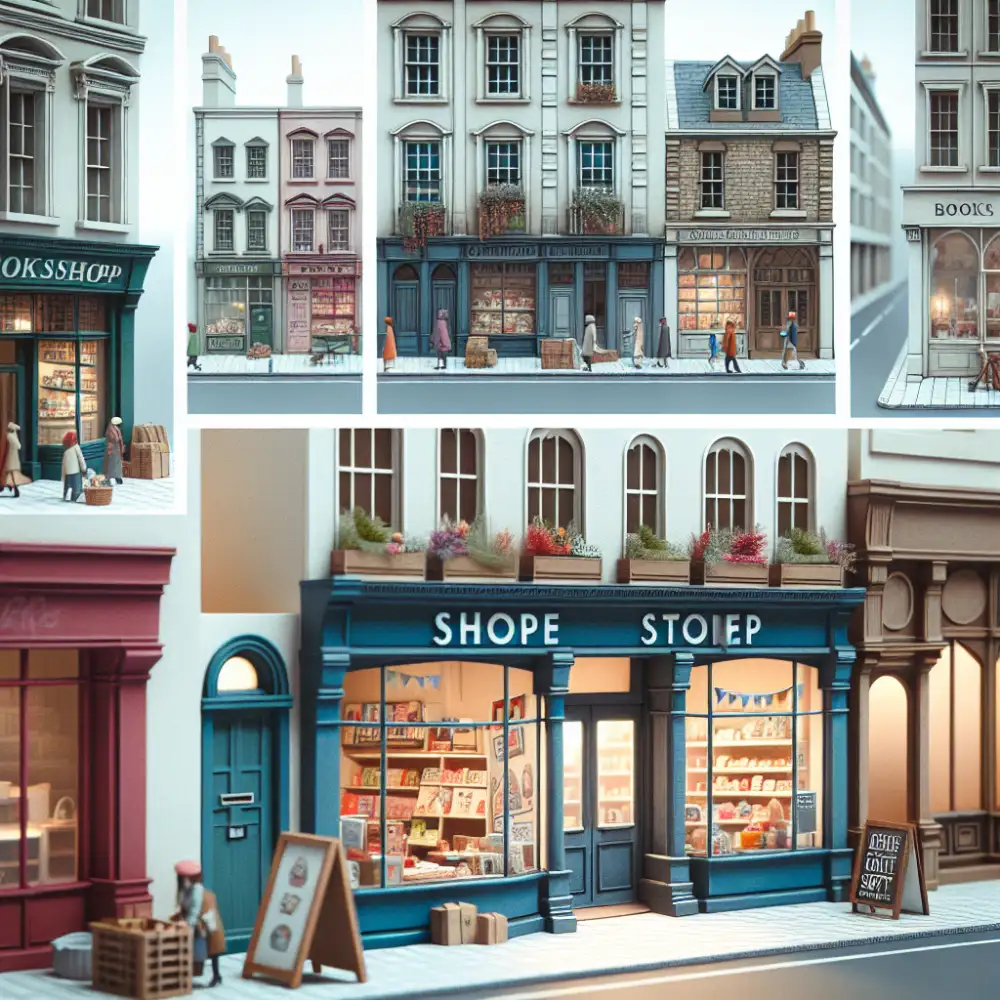
Key Aspects to Consider:
- Visibility: Use bold fonts, clear lettering, contrasting colors, and consider illuminated signs for enhanced visibility.
- Brand Reflection: Ensure your storefront design (signage, colors, materials) aligns with your overall brand identity for a cohesive and trustworthy look.
- Showcase Your Offerings: Utilize eye-catching window displays, digital screens with promotions, or display best-selling items to pique interest.
- Cleanliness and Invitation: Maintain a clean, well-lit, and inviting storefront with clear signage and an accessible entrance.
- Simplicity is Key: Avoid clutter and keep signage concise, impactful, and easy to understand quickly.
- Functionality Matters: Ensure a clearly marked and accessible entrance with adequate lighting for safety and visibility.
Remember, your storefront is an extension of your brand and a powerful marketing tool. Investing in thoughtful signage and branding creates an inviting and memorable experience that attracts customers and drives success.
Window Displays
Window displays are the eyes to a shop’s soul. They offer a sneak peek into your brand’s personality and the products you offer. An effective window display is a powerful tool to attract customers, boost foot traffic, and ultimately drive sales.
Think of your storefront as a stage. The architecture, signage, and surrounding elements set the scene, but the window display is your chance to tell a story. Whether it’s a minimalist approach with a single statement piece or an elaborate tableau, your display should capture attention and pique curiosity.
Consider your target audience and what would resonate with them. Color palettes, props, and the overall theme should align with your brand identity and current marketing campaigns. Don’t be afraid to get creative and think outside the box – interactive elements, technology integration, and unexpected twists can create a memorable experience for passersby.
Remember, your window display is prime real estate. Keep it fresh, change it regularly, and make it an integral part of your overall brand experience.
Entrance and Accessibility
The entrance to your shop is the first impression customers get of your business, so it's important to make it inviting and accessible. A well-designed storefront will draw customers in and make them want to learn more about what you have to offer.
Consider the needs of all potential customers when designing your entrance. Make sure the doorway is wide enough to accommodate wheelchairs and strollers. Use non-slip flooring to prevent accidents. Install automatic doors if possible.
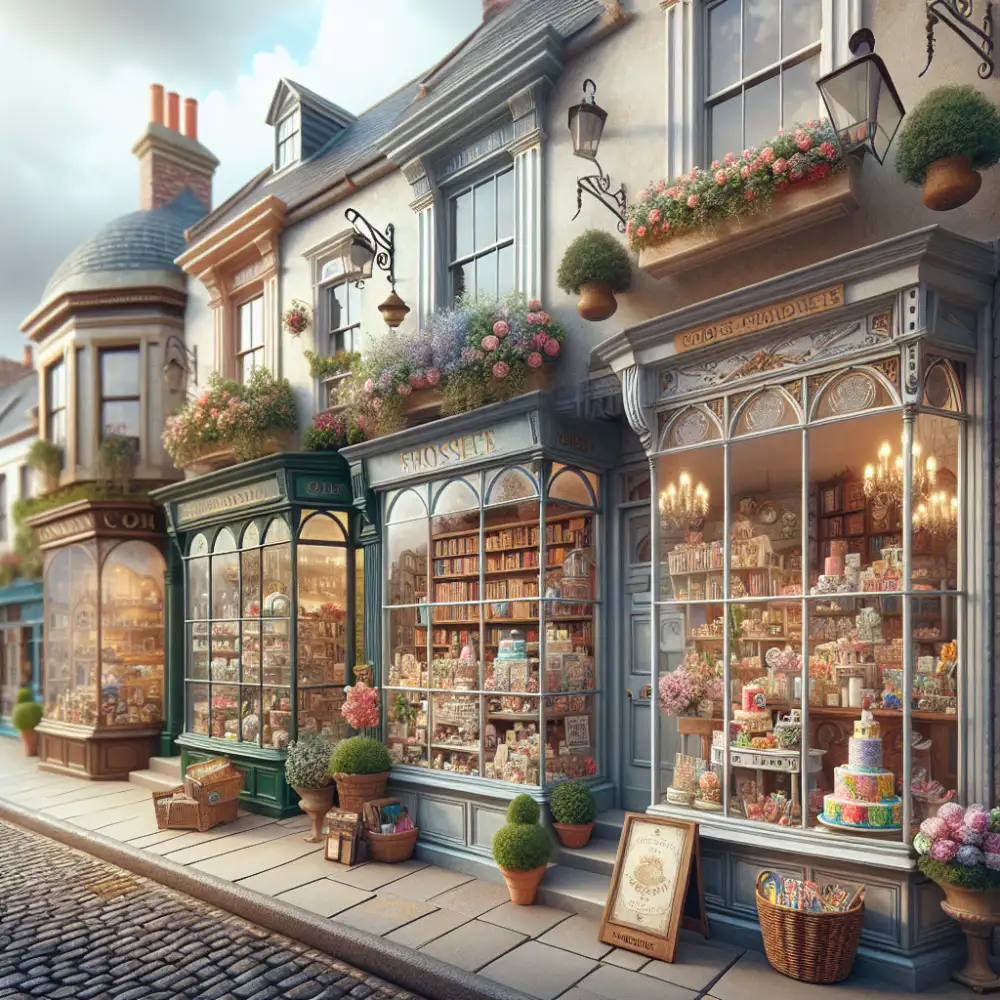
Your storefront display is a valuable opportunity to showcase your products and brand. Use eye-catching visuals, such as bright colors and bold graphics. Highlight your most popular or unique items. Keep your displays clean and well-lit.
Signage is also important for accessibility. Make sure your signs are large enough to read from a distance. Use clear and concise language. Consider using braille or tactile signage for customers with visual impairments.
By making your shop entrance and storefront accessible to everyone, you'll create a welcoming environment that encourages customers to come in and explore.
Lighting
Lighting plays a crucial role in setting the mood and attracting customers to your storefront. It can highlight your products, enhance your brand image, and create an inviting atmosphere. When choosing lighting for your storefront, consider the following aspects:
- Visibility: Ensure your storefront is well-lit to attract attention from passersby, especially during the evening hours. Bright, clear lighting makes it easier for potential customers to see what you offer.
- Ambiance: The right lighting can create a welcoming and comfortable atmosphere for your customers. Warm, inviting lighting encourages people to enter your store. Consider using a combination of ambient, accent, and task lighting to achieve the desired effect.
- Product Highlighting: Accent lighting can be used to draw attention to specific products or displays. By strategically placing spotlights or track lighting, you can highlight key items and make them more visually appealing.
- Brand Image: Your lighting choices should align with your brand identity. For example, a high-end boutique might opt for elegant chandeliers, while a trendy streetwear store might choose industrial-style pendant lights.
- Energy Efficiency: Consider using energy-efficient lighting options, such as LED lights, to reduce your energy consumption and save on costs. LEDs also have a longer lifespan than traditional bulbs, reducing maintenance requirements.
By carefully considering your lighting design, you can create a storefront that is both visually appealing and effective in attracting customers. Remember to regularly assess and adjust your lighting to ensure it continues to meet your needs and enhance your storefront's overall impact.
Color Schemes
The colors you choose for your storefront design can make or break its success. They can attract customers or make them turn away. A good color scheme can evoke the right emotions, highlight key elements, and strengthen your brand identity. When choosing a color scheme for your storefront, there are many factors to consider, such as your brand, target audience, and the overall message you want to convey.
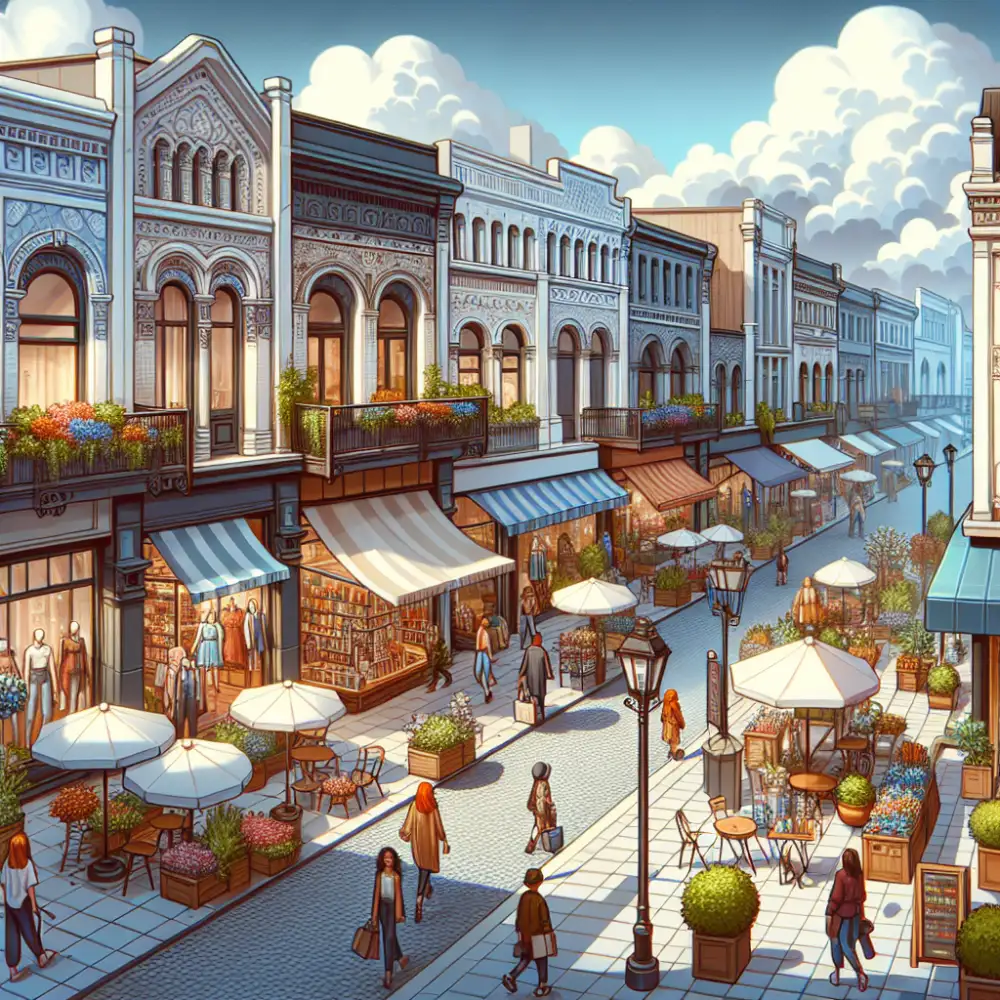

Start by thinking about the psychology of colors. Warm colors like red, orange, and yellow are known for their energy and excitement. They can attract attention from afar, making them perfect for clearance sales or grabbing the attention of passersby. Cool colors like blue, green, and purple are more associated with calmness and sophistication. They can create a welcoming and trustworthy atmosphere. Neutral colors like white, black, and gray provide a clean and modern backdrop, allowing your products and displays to take center stage.
Consider your brand personality and target audience. If your brand is youthful and trendy, you might opt for bold and contrasting colors. If you're targeting a more sophisticated demographic, a muted and elegant color palette might be more appropriate. Research your target audience's preferences and choose colors that resonate with them.
Don't underestimate the power of contrast. Use contrasting colors to highlight important elements like your storefront signage, entrance, and window displays. For example, a bright yellow sign against a deep blue background will pop and capture attention. Ensure high visibility and readability by considering the contrast between your text and background colors.
Remember to create a cohesive and visually appealing look. Your storefront's color scheme should complement your logo, branding, and interior decor. Consistency in color choices across all aspects of your business strengthens brand recognition and creates a memorable experience for your customers.
Materials
The choice of materials for your shop front is a crucial factor in determining the overall aesthetic appeal and functionality of your storefront. Traditional materials like wood and brick offer a classic and timeless look, while modern materials such as aluminum and glass can create a sleek and contemporary feel. Wood is a versatile material that can be carved, painted, and stained to create a variety of looks. It can evoke a sense of warmth and tradition, making it suitable for businesses like bookstores, cafes, and boutiques. Brick, on the other hand, is a durable and low-maintenance material that can withstand harsh weather conditions. It is often used for shop fronts in historic districts or for businesses that want to convey a sense of permanence and stability.
For a more modern aesthetic, aluminum and glass are popular choices. Aluminum is a lightweight and durable material that can be easily molded into various shapes and sizes. It is often used for framing large windows and doors, creating an open and inviting feel. Glass is another excellent option for modern shop fronts, as it allows for maximum visibility into the store. Large glass windows can showcase products and create a sense of transparency, attracting customers who are passing by.
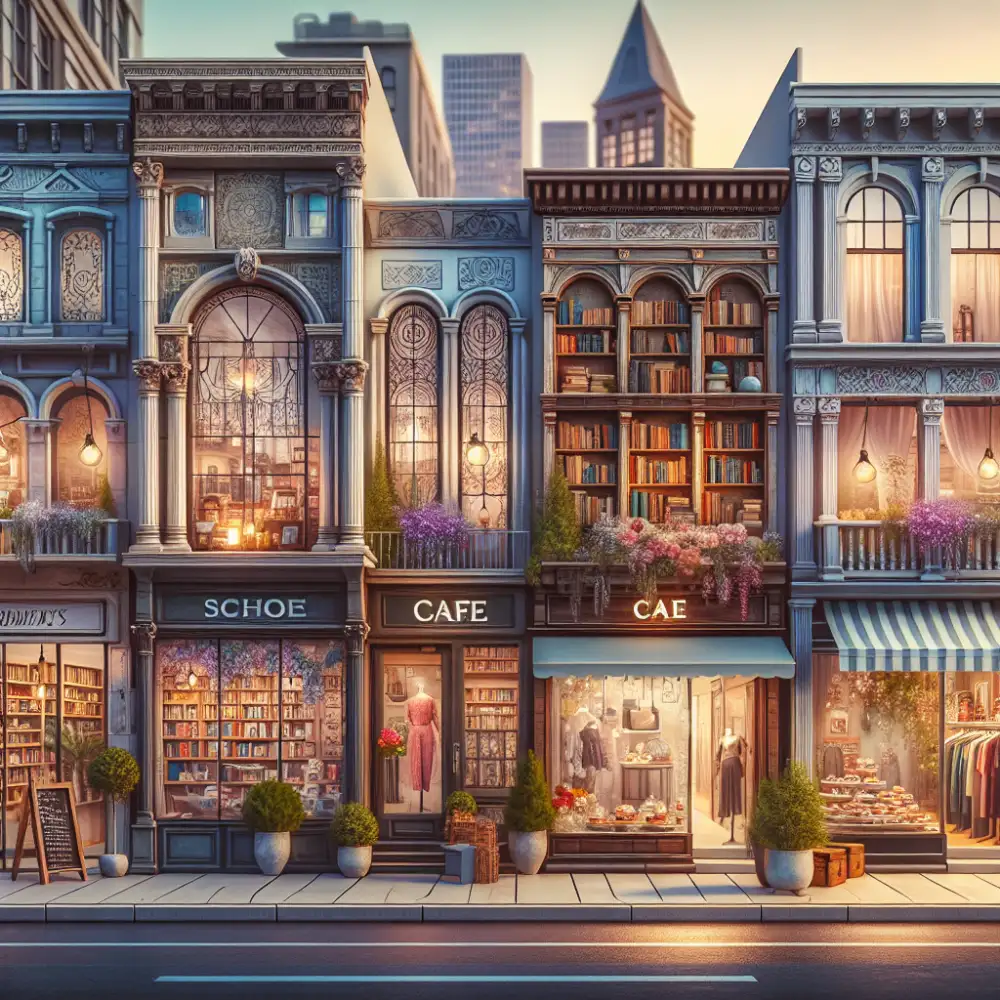
In addition to these common materials, there are also a variety of specialty materials that can be used for shop fronts. Metal cladding, for example, can add a touch of industrial chic, while stone veneer can create a luxurious and sophisticated look. Ultimately, the best materials for your shop front will depend on your brand identity, budget, and the overall style of your storefront.
Technology Integration
Technology has revolutionized how businesses attract customers and create immersive shopping experiences. Digital signage replaces static displays with vibrant, eye-catching content. High-resolution screens can showcase product videos, promotions, and interactive elements that engage passersby. Touch-screen kiosks empower customers to browse inventory, access product information, and even place orders without direct staff assistance. Augmented reality (AR) overlays digital content onto the real world through smartphones or tablets. Imagine customers using their devices to visualize how furniture would look in their homes or trying on clothes virtually without entering a fitting room. Virtual reality (VR) takes it a step further by creating entirely immersive experiences. Retailers can create virtual showrooms where customers can explore products in a 360-degree environment, offering a unique and engaging way to experience their offerings. Proximity marketing uses Bluetooth beacons to send targeted messages and promotions to customers' smartphones as they pass by or enter the store. This direct approach can drive foot traffic and provide customers with timely and relevant information. Data analytics plays a crucial role in optimizing storefront technology. By tracking customer engagement with digital signage, kiosks, and other interactive elements, businesses can gather valuable insights into customer preferences and behaviors. This data can inform future storefront design decisions, marketing campaigns, and inventory management.
Customer Experience
A well-designed storefront is more than just aesthetics – it's an invitation, a promise, and the beginning of a customer's journey. It's about crafting an experience that starts from the moment a potential customer lays eyes on your shop and extends far beyond their purchase. Imagine walking down a bustling street, your eye caught by a vibrant storefront. The window display, carefully curated, tells a story that resonates with you. Intrigued, you step inside. The layout is intuitive, guiding you through a world of carefully presented products. Knowledgeable staff greet you with a smile, ready to answer questions and offer personalized recommendations. The lighting is perfect, highlighting the quality of the merchandise. Music sets the mood, creating a welcoming and engaging atmosphere. This, in essence, is the power of a well-crafted customer experience within a retail space. It's about understanding your target audience and creating an environment that speaks to their needs and desires.
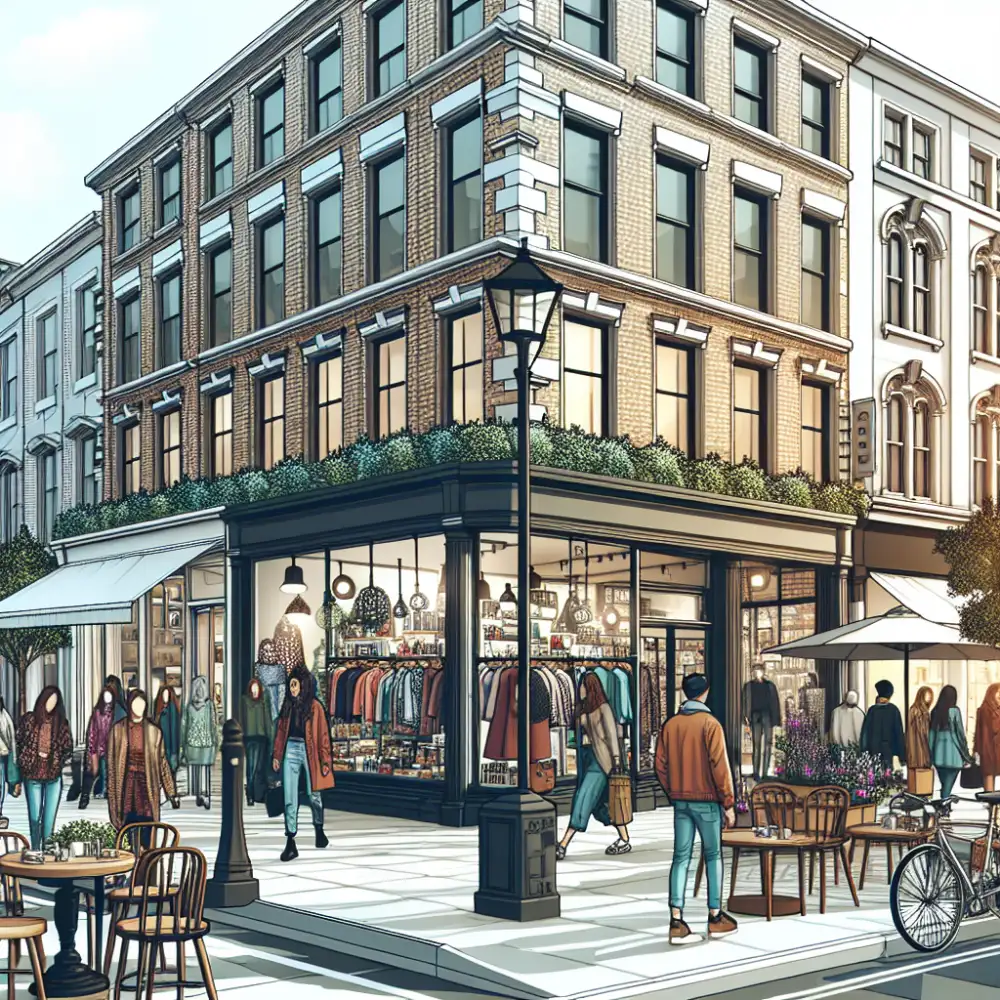

| Feature | Traditional Shop Front | Modern Shop Front |
|---|---|---|
| Signage | Often hand-painted or neon signs, focused on the shop name. | Digital displays, LED lighting, emphasis on branding and imagery. |
| Window Display | Static displays with mannequins and product arrangements. | Interactive displays, digital screens, storytelling elements. |
| Entrance | Single door with a traditional storefront awning. | Open facades, automatic doors, integration with outdoor seating. |
| Materials | Wood, brick, glass, traditional awnings. | Metal, concrete, large glass panels, minimalist awnings. |
Budget Considerations
While a stunning storefront is a powerful tool for attracting customers, it's crucial to approach the design process with a realistic budget in mind. The cost of a storefront renovation can vary greatly depending on the scope of the project, materials used, and location.
Start by outlining your must-haves versus your nice-to-haves. Do you need entirely new structural elements like windows and doors, or can you refresh the existing ones? Could a fresh coat of paint, updated lighting, and attractive signage create a significant impact without breaking the bank?
Consider cost-effective materials that align with your brand aesthetic. Reclaimed wood, for example, can add a rustic charm while being budget-friendly. Explore using digital displays for advertising instead of traditional printed signage, saving you money in the long run.
Don't underestimate the power of DIY. Simple tasks like painting, installing shelving, or even creating eye-catching window displays can be handled in-house, freeing up your budget for more specialized tasks.
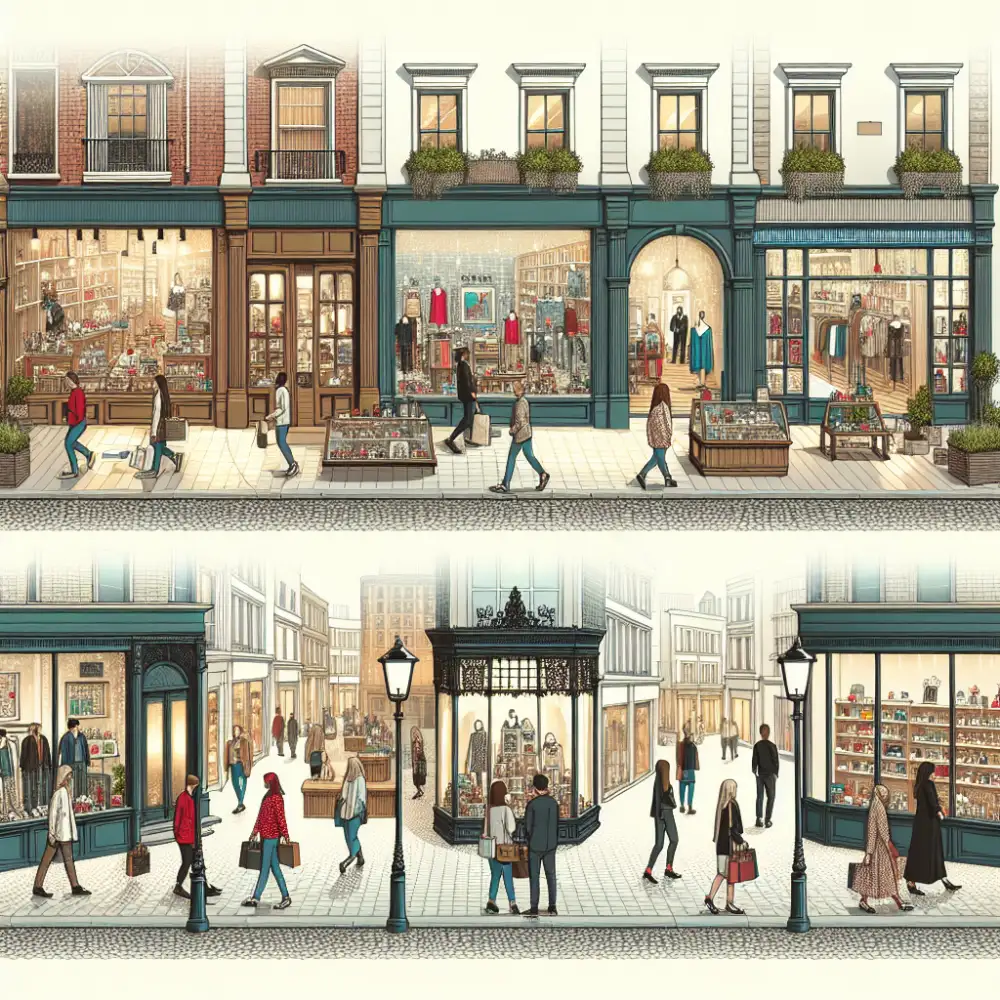
Remember, a successful storefront doesn't have to be the most expensive. By prioritizing your needs, exploring cost-effective options, and considering a touch of DIY, you can create a welcoming and impactful storefront that aligns with both your vision and your budget.
Maintenance
Regular maintenance is essential for preserving the functionality and visual appeal of your storefront. A well-maintained storefront is more inviting to customers and reflects positively on your brand. Here's a breakdown of key maintenance tasks:
- Cleaning: Regularly clean windows, doors, and facades to remove dirt, grime, and fingerprints. Use appropriate cleaning solutions for different materials to avoid damage.
- Inspections: Conduct routine inspections for signs of wear and tear, such as cracks, chips, or fading. Address these issues promptly to prevent further damage and maintain structural integrity.
- Lighting: Check exterior and interior lighting regularly. Replace burnt-out bulbs and ensure all lights are functioning correctly to enhance visibility and security.
- Signage: Keep your signage clean and legible. Repair or replace any damaged or faded signs to ensure your brand message is effectively communicated.
- Painting and Repairs: Refresh the paintwork periodically to maintain a vibrant and welcoming appearance. Address any necessary repairs to woodwork, metalwork, or other structural elements.
- Landscaping: If applicable, maintain any landscaping elements around your storefront. Keep plants trimmed, remove debris, and ensure the area is clean and inviting.
- Seasonal Maintenance: Adjust your maintenance routine based on the season. For instance, clear snow and ice in winter, and clean up fallen leaves in autumn.
By adhering to a regular maintenance schedule, you can ensure your storefront remains an asset to your business, attracting customers and enhancing your brand image. Remember, a little upkeep goes a long way in preserving the longevity and visual appeal of your storefront.
Trends and Inspiration
Minimalism continues to be popular, with clean lines, neutral colors, and a focus on showcasing products. Sustainability is also key, with businesses using reclaimed materials and energy-efficient lighting.
Interactive and Engaging
Interactive elements are transforming storefronts. Digital displays allow for dynamic content, while augmented reality lets customers visualize products in their own homes.
Local Art and Community
Local artists are adding a unique touch to storefronts. Murals, window displays, and sidewalk art can turn a storefront into a neighborhood attraction.
Published: 24. 06. 2024
Category: Business



